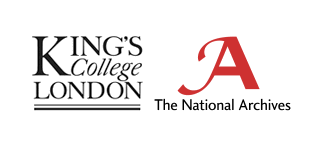Digital Preservation Initiatives
The identification of those properties which are significant to the continued preservation and accessibility of authentic digital objects, across changing technical environments, is a fundamental task for successful digital preservation. Unless such properties can be defined in a rigorous and measurable manner, cultural memory institutions have no objective framework for identifying, implementing, and validating appropriate preservation strategies, nor for asserting the continued authenticity of their digital collections.
In recent years, the need to identify such properties has been highlighted within a number of notable digital preservation programmes. These include the National Archives of Australia, the Electronic Record Archives programme at the National Archives and Records Administration, The National Archives’ Seamless Flow programme in the UK, and the EU-funded DELOS project. Some conceptual work on authenticity and object properties has been undertake as part of the InterPARES 2 project at the University of British Columbia. However, to date, little research has been undertaken on the practical application of the concept and approach. It is therefore widely recognised that there is a pressing need for practical research in this area, to develop a methodology, and begin identifying quantifiable sets of significant properties for specific classes of digital object.
- The National Archives of Australia
The National Archives of Australia (NAA) Performance approach has been implemented in a digital preservation operational unit within that institution. NAA uses a migration strategy based on ‘normalisation’, whereby digital records are migrated at time of ingest into a very small range of open, non-proprietary digital formats. For example, images are migrated to PNG format, audio is migrated to BWF and most other formats are migrated to an XML equivalent. The XML outputs for each ingest format type have corresponding XML schema which determines the structure and semantics of the output types. The XML outputs contain the ‘essence’ of the input objects, and the XML schema are an explicit statement of what NAA sees as the essence of the input object types. - Cornell University
Cornell University in the US has developed a risk-based approach to managing digital formats over time that is based on a comprehensive risk assessment of migrating formats. Part of the risk assessment involves the comparison of the source format with the format that is the migration target. Although not made explicit in the paper this shares aspects of the current project and is essentially an assessment of the ability of the target format to retain the significant characteristics of the source format. - The National Archives
The UK National Archives (TNA) Seamless Flow Programme is investigating the modelling of significant properties of electronic records, primarily as a means of validating preservation actions such as migration. Work so far has focussed on developing a data model to support this, which allows the definition of extensible, type-specific properties for particular classes of electronic record. TNA is also developing a service-oriented architecture for deploying characterisation and preservation action tools, driven through the PRONOM technical registry, and is enhancing PRONOM to model property invariance for specific migration pathways. - PLANETS Project
The PLANETS Project is funded under the European Commission Information Science and Technologies Framework Programme 6 Call 5, which brings together European National Libraries and Archives, leading research institutions, and technology companies to address the challenge of preserving access to digital cultural and scientific knowledge. Understanding significant properties is an important element within PLANETS. The Preservation Planning sub-project is developing methodologies which use utility analysis for evaluating alternative preservation actions against standard criteria, which can include the capabilities of the preservation actions with respect to preserving significant properties. The Characterisation sub-project, led by TNA, is developing a generic framework to automatically deploy new and existing characterisation tools, and process their outputs in a standardised manner. These characterisation tools could be used to measure the significant properties of specific digital objects, and their outputs could therefore be used by preservation planning to assess the merits of preservation actions. - National Archives and Records Administration
The NARA Electronic Records Archive (ERA) is considering a template-based approach to describing the significant properties of particular types of electronic record. A given category of record, such as a particular form of report, can be described by a standard set, or template, of significant properties. Preservation action tools can then be categorised in terms of their capabilities measured against this template. - nationaal archief
The Digitale duurzaamheid project developed a Digital Preservation Testbed investigated a wide range of issues associated with digital preservation, including significant properties as a concept. The approach taken by the project has had significant influence on the InSPECT project. - InterPARES
The InterPARES 2 project aims at developing the theoretical and methodological knowledge essential to the long-term preservation of authentic records created and/or maintained in digital form. This knowledge should provide the basis from which to formulate model policies, strategies and standards capable of ensuring the longevity of such material and the ability of its users to trust its authenticity.

